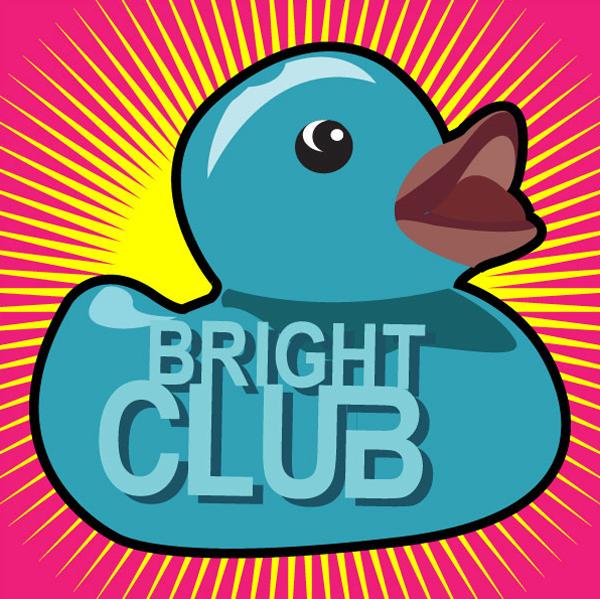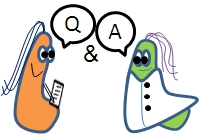
Submitted by Anna Davies on Mon, 23/04/2012 - 17:06
Public engagement is an often thrown about term. Research councils are increasingly requiring some level of ‘community engagement ‘ as a condition of grant allocation, but what exactly does it involve, and how easy is it to accomplish without detracting from your research? The high turnout at the annual Cambridge Science Festival is an excellent example of opportunities for scientist to engage with an enthusiastic public, but ‘public engagement’ covers a broad range of activities, and there are plenty of opportunities to try them out. I spoke to several Cambridge Infectious Diseases members about their experiences with public engagement to find out what it involves, and why they do it.
Laboratory visits
Dr Clare Bryant started a few years ago by taking sixth form students into her lab. “It started with a family member wanting to try it out, and now we have a steady stream of students coming through the lab. They come for a day, sometimes even a week, and they really enjoy it. We get them loading gels, helping postdocs, doing mini experiments (pressing their hands onto agar gels pre/post wash to see what grows) and following what goes on in a research lab. We have a lot of students wanting to come, and most of them have gone onto pursue careers in science and medicine. I also take in undergraduate summer students for 6-8 weeks who are generally fantastic. Most have gone on to do PhDs, and several in my lab. Some students who appeared to be struggling academically really shone in the research environment, and gone on to pursue successful research careers. It does take up a bit of time, but it is very rewarding and they are a pleasure to have around." And lots of paperwork? “No, not really. I write a paragraph project proposal, or better, get the student to propose a project, and then write a follow up report. The challenge is obtaining a consumables budget - some of the funding schemes that support these types of project, (BBSRC, Wellcome) can help with that. I had been taking in students anyway, but was pleased to find that it also counted as ‘community engagement’ with my funder.”
The Nuffield Bursary scheme provides another conduit through which sixth form students have the opportunity to undertake a 4-6 week research project in a lab over the summer holidays. Dr Barbara Blacklaws told me about her experiences. “An email came through the department about the opportunity, and since it helps fulfil my grant requirements and I don’t usually have any contact with schools, I put forward a relatively simple project doing long range PCRs. The student came from a local school and, although initially he required quite a lot of supervision, towards the end I was happy to leave him to get on with it - he was better than some of the undergraduates! It did take a fair amount of time, and of course you have to plan things like holidays around their visits, but I did enjoy it. It also gave me ideas about questions for student interviews.”
Visits to Schools
Visits to local schools can provide the opportunity to engage with young people, but with a lesser time commitment. Dr Effrossyni Gkrania Klotsas did an hour-long interactive workshop in King’s College School, Cambridge, talking to a group of 6 year olds about how to avoid infections. “we discussed how many cells we have in our bodies and how many germs we carry, the difference between ‘good’ and ‘bad’ germs, looked at pictures of them, and did an experiment to show them how infections are transmitted in real time within a classroom by shaking hands. We also taught them how to properly wash their hands using the 6-step technique. The children then followed up our visit by working on theme related word-search sheets and true-false sheets made by the Addenbrooke’s Infection Control team.”
Sometimes visits to schools can open up other avenues for public engagement, as Prof. Jim Kaufman found out when he went to speak to students from Saffron Walden County High School. “Two of the students approached me afterwards and asked if there was any possibility of doing some research in my lab. They came and did a work experience placement, and were an absolute delight to work with – hard working, motivated, interesting. One will be attending Jesus College here next year, and the other is taking a year out to teach in Guyana, before going to one of the many Universities that accepted her.”
In addition to giving regular talks at primary schools, Prof. Duncan Maskell has given a regular lecture ("Infections in a changing world") as part of the University's Schools Outreach programme. "Young people have active and interesting minds, and I really enjoy talking to them about science. University is fundamentally about education, and we should be active in trying to help to educate as many people as possible, at all ages. I am also very clear about the importance of our outreach work - we need to help young people to understand that where you come from is completely irrelevant, the University of Cambridge really is accessible to all." Clare Bryant also gives talks at Vet School open days. “The questions that you get from the children are the best. Some of the questions they ask are really insightful- they see your work from a completely different perspective, and there have been several times I’ve gone back to my office thinking about questions they’ve raised – it has affected my research!”
Exhibitions and Experiments.
Prof. James Wood and Dr. Olivier Restif worked with colleagues at the Institute of Zoology to put together a ‘Bats and Bugs’ exhibition at the Royal Society Summer Festival exhibition 2011 (You can find youtube videos associated with this here and here). “it is hard work” remarks James Wood, “but there’s no point in doing interesting research if you don’t tell people about it. And we do need to tell more than the people that we work with, particularly since we are funded by society. It’s also a really good way of educating students. We had a lot of local students to help out, not just our PhD students, people who don’t normally work on our research, but thought it sounded a bit interesting. After being brought up to speed they were able to explain the basic story behind the science and act as our champions, while we were there to answer the more challenging questions. I think there is a lot of interest among graduate students and undergraduates, and for the vets/clinicians, it is particularly useful, since they will frequently have to explain science to the public in the course of their job. We also always try to feed our results back to the people who’ve helped us – it’s not technically public engagement, but is part of our responsibility to communicate as scientists. Not every scientist can become Brian Cox - most of us can’t play the guitar.“
Lia Chappell, a graduate student at the Sanger Institute, former president of CHaOS (Cambridge Hands on Science) society, and a practised hand at public engagement explains the attractions. “I’ve been doing public engagement since I was at school, and as an undergraduate CHaOS was a natural extension of that. It’s fun to make a bit of a mess and play around with living things, but it’s also really satisfying when people suddenly ‘get’ a bit of science they never understood before, like how DNA works. If science is worth doing (and most researchers would probably agree that it is) then it’s good to give something back, and inspire the next generation of scientists.” CHaOS, which is mostly formed of undergraduates, runs fun hands-on science roadshow events for schools and families- at the Cambridge Science Festival (very popular!), on a 4-week summer roadshow, and in Cambridgeshire during the Michaelmas term.
The Science Festival, is of course, a prime opportunity to try out public engagement. Jim Kaufman’s lab contributed a big exhibit last year, with kids making pathogens from candy, playing computer games, drawing cells, making models, all while their parents talked with people from the lab about what we do.
Media
The Naked Scientists are a popular local radio show, who aim to communicate ‘stripped down’ science to the general public (a potential local audience of 6 million, as well as a regular international online following). A recent programme “Why Viruses Don't Infect the Same Cell Twice” featured several CID members. Dr Estee Torok, who spoke about whole genome sequencing, related her experience. “I was absolutely terrified about doing it, and very nervous, but we sat down and had a cup of tea beforehand to discuss what we would say, and then when it actually came down to the interview it was just like having a conversation – it felt very informal.” Clare Bryant’s experience on the show was very similar: “I went on the show to talk about the uses of lasers in science, and the integration of maths and physics. You are surrounded by other scientists, so it is a safe forum to talk about your research. The actual interview felt a bit weird - I became acutely aware of my hands, but it was fine - enthusiasm helps! It’s fairly easy, but you just have to remember not to swear!”
Stand up comedy?
For those that feel truly brave, there is Bright Club - stand up comedy for scientists. Truly terrifying surely? Lia (who has tried it), insists it’s not as scary as it sounds. “Writing the material is actually quite easy, getting up there and going for it is the hardest part. But once you’ve tried stand up in a pub, no academic conference will ever seem that scary."
Interested to find out more? Try the following links for more information:
University of Cambridge Public Engagement team
National Coordinating Centre for Public Engagement
Wellcome Trust Public Engagement

